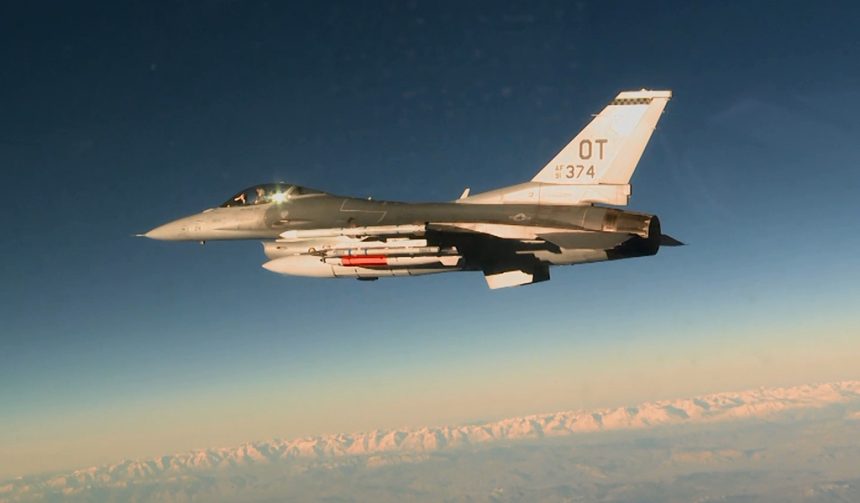B-61 inert nuclear gravity bomb has passed first F-16 flight test.
On Mar. 14, an F-16 from the 422nd Test and Evaluation Squadron at Nellis AFB, Nevada, dropped a B61-12 over the Nellis Test and Training Range Complex in the first test use of the upgraded B61 with the F-16 aircraft.
The B61-12 represent the latest LEP (Life-Extention Program) upgrade to the B61 line of nuclear weapons that has already been extensively tested with the F-15E Strike Eagles of the 422nd Test and Evaluation Squadron, back in 2015.
The Life Extension Program or LEP, will replace the B61 -3, -4, -7, and -10 mods, with the -12 that, along with the B83, will become the only remaining gravity delivered nukes in the inventory.
“The B61-12 gravity bomb ensures the current capability for the air-delivered leg of the U.S. strategic nuclear triad well into the future for both bombers and dual-capable aircraft supporting NATO,” said Paul Waugh, AFNWC’s Air-Delivered Capabilities director in a U.S. Air Force release dated Apr. 13 (more or less when the world learned about the first use of the famous MOAB in Afghanistan). The B61-12 will be compatible with the B-2A, B-21, F-15E, F-16C/D, F-16 MLU, F-35 and PA-200 aircraft.
The LEP increases the B61’s accuracy so much that it will have the same capability against hardened targets as the much more powerful weapons it is replacing.















